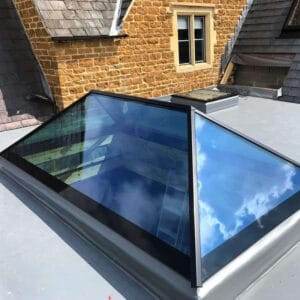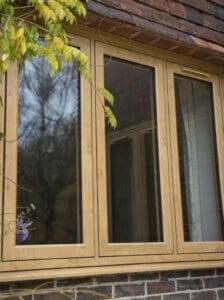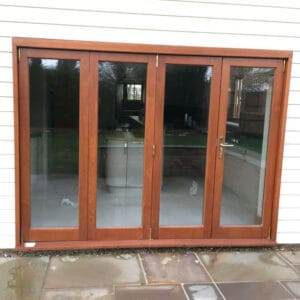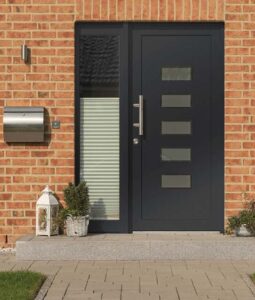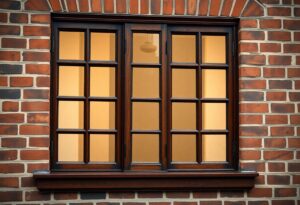There’s a wealth of information surrounding energy ratings for aluminium entrance doors, and understanding these can significantly impact your home’s energy efficiency. Knowing how these ratings affect heat retention and overall comfort can guide your purchasing decisions. In this post, you will learn what these ratings mean and why they matter, enabling you to make informed choices that benefit both your wallet and the environment.
Understanding Energy Ratings
Before you invest in aluminium entrance doors for your home, it is necessary to understand the concept of energy ratings. These ratings serve as a guide to assess the thermal performance and energy efficiency of the doors you are considering. Energy ratings, often expressed through the European Energy Label (A+++ to E), enable you to compare different products easily, ensuring that you select a door that meets both your aesthetic requirements and energy-saving goals.
What Are Energy Ratings?
Ratings are an evaluation system designed to measure how well a product can resist heat transfer. In the context of aluminium entrance doors, this means how effectively they can keep your home warm during the winter and cool during the summer. A higher energy rating indicates better insulation properties, which translates into reduced energy consumption and expenditure on heating or cooling your living space.
Importance of Energy Ratings for Aluminium Doors
At the core of your decision-making process regarding aluminium entrance doors is the significance of energy ratings. Choosing a door with a high energy rating can significantly impact your home’s energy efficiency and contribute to lower utility bills over time. Furthermore, energy-efficient doors help maintain a comfortable indoor temperature, reducing the likelihood of drafts and cold spots in your home.
Considering that energy ratings also signify the environmental impact of your choices, selecting a door with an excellent rating not only benefits your wallet but is also a step towards sustainable living. An energy-efficient aluminium door can enhance your home’s value and appeal, as modern buyers increasingly seek properties that contribute to lower energy consumption and carbon footprints. Thus, investing in a door with a strong energy rating is a proactive move for both your finances and the planet.
Factors Affecting Energy Efficiency
There’s no shortage of elements that can impact the overall energy efficiency of your aluminium entrance door. Understanding these factors can help you make an informed decision when choosing the right door for your home. Consider the following:
- Thermal conductivity
- Insulation properties
- Weather seals
- Frame design
- Glass type
Any homeowner keen on maximising energy performance should pay attention to these factors when selecting an aluminium entrance door. Making an informed choice can lead to greater comfort in your home and lower energy bills.
Thermal Conductivity
Beside the aesthetics, one of the primary factors affecting the energy efficiency of your door is its thermal conductivity. This refers to the ability of the door’s material to conduct heat. Aluminium, while generally considered a poor insulator due to its high thermal conductivity, can be treated or enhanced with thermal breaks to mitigate heat transfer. By choosing a door with low thermal conductivity, you can minimise heat loss during the colder months and reduce unwanted heat gain in the summer.
Insulation Properties
Around the subject of insulation, you’ll find that the door’s insulation properties play a significant role in maintaining a stable indoor climate. A well-insulated door can drastically decrease the amount of energy needed for heating and cooling your home. Look for doors that utilise advanced insulation techniques and materials that meet or exceed government energy efficiency standards.
At the heart of effective insulation properties is the material composition and the presence of multi-chambered profiles and polyurethane foam filling. These features create a barrier against temperature fluctuation, ensuring that your living space remains comfortable year-round. Choosing a door with excellent insulation can also lead to significant savings on your energy bills, making it a wise investment for your home.
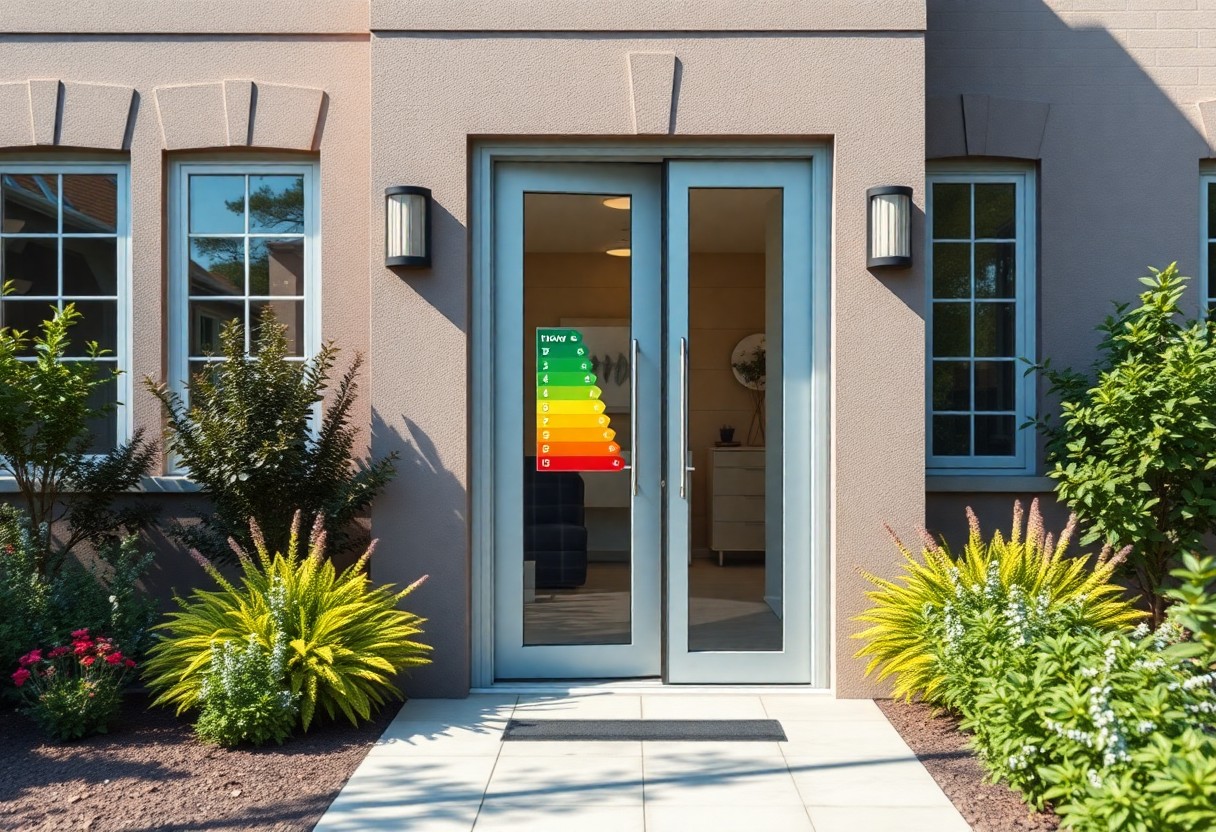
Choosing the Right Energy Rating
While selecting aluminium entrance doors, it’s crucial to consider the energy rating that best suits your home. The right energy rating not only impacts your energy bills but also aids in maintaining a comfortable indoor environment throughout the year. With multiple options available, you should examine the specific requirements of your home and lifestyle to identify which energy rating aligns with your needs. This choice will ultimately influence not just your home’s aesthetics but also its long-term energy efficiency and sustainability.
Rating Systems Overview
Around the globe, various rating systems exist to assess the energy efficiency of doors, with each country or region often adopting its criteria. The most recognised systems include the UK’s Energy Saving Trust and the European Energy Performance Certificate, both of which provide guidance on how to determine the energy efficiency of your aluminium doors. Understanding these rating systems is vital as they enable you to make informed decisions that will significantly benefit your home and enhance your comfort level.
How to Interpret Energy Ratings
Against the backdrop of these systems, you may find yourself questioning how to effectively interpret energy ratings. It’s crucial to recognise that energy ratings typically range from A* to G, with A* being the most efficient. Your choice should ideally be an A-rated door, as this signifies it will provide excellent thermal insulation, thus ensuring lower energy consumption and reduced bills. By understanding these indicators, you can more accurately assess the value of the door you are considering in relation to your energy usage.
Right now, focusing on energy ratings should be a priority in your decision-making process. Paying attention to thermal performance, air permeability, and water resistance ratings, you can ascertain how well the door will perform in different conditions. Furthermore, doors with higher ratings often come with better warranties and can add significant value to your home. Investing in the right energy-rated door not only protects your property from the elements but also contributes positively to your overall energy efficiency and comfort.
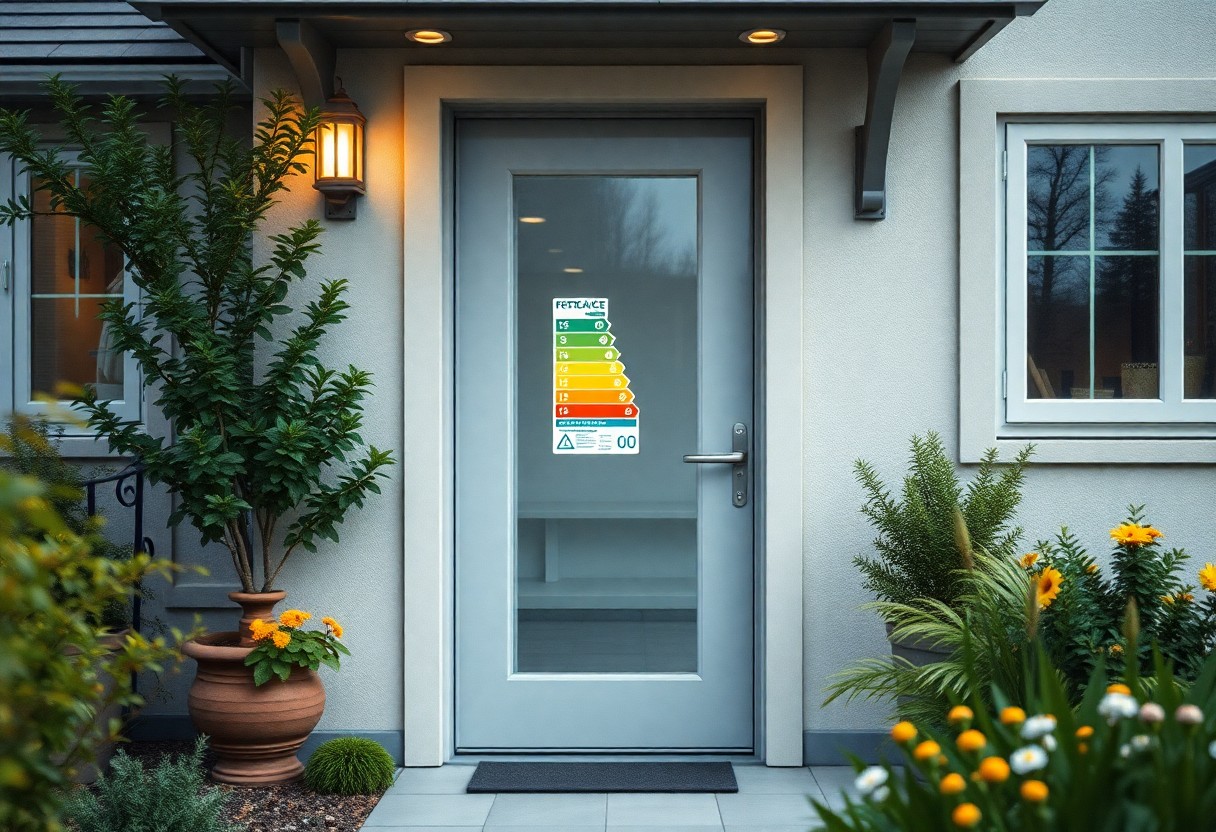
Benefits of High-Energy Rated Aluminium Doors
After investing in high-energy rated aluminium entrance doors, you will quickly notice the advantages they bring to your home. These doors are designed to effectively minimise heat transfer, which leads to a more comfortable living environment. Additionally, as you explore options online, resources such as How to Choose the Best Energy-Efficient Doors can provide valuable insights into the best features to look for when upgrading your entryway. By focusing on energy efficiency, you not only enhance your home’s aesthetic appeal but also its thermal performance.
Cost Savings and Energy Efficiency
Around the modern home, energy bills can sometimes feel overwhelming. However, installing high-energy rated aluminium doors can lead to significant cost savings. These doors help maintain your home’s temperature, thereby lessening the need for heating in the winter and cooling in the summer. Consequently, you may notice a marked reduction in energy consumption, which translates to financial benefits over time.
Environmental Impact
Environmental considerations are more important than ever, and high-energy rated aluminium doors play a role in sustainability. By using these doors, you are contributing to lower energy consumption, which in turn helps reduce your carbon footprint. This adherence to energy efficiency promotes a greener lifestyle that benefits the planet.
Rated for their outstanding insulation properties, high-energy rated aluminium doors not only enhance your comfort but also safeguard the environment for future generations. By making this choice, you are actively participating in a solution that combats climate change, whilst ensuring your home remains stylish and efficient.

Installation Considerations
To attain the best results when installing aluminium entrance doors, it’s important to understand the various factors that contribute to a successful installation. A well-executed installation not only enhances the aesthetic appeal of your home but also significantly impacts energy efficiency and security. You should consider the quality of the frame, the door’s weight, as well as the level of insulation desired. Ensuring that your door is installed with the correct alignment ensures a proper seal, which can prevent drafts and reduce energy consumption.
Professional Installation vs. DIY
After deciding on your aluminium entrance door, you may be weighing the options between professional installation and a DIY approach. While attempting to install the door yourself may seem like a cost-effective solution, the intricacies involved can often lead to mistakes that could compromise both security and energy ratings. Hiring a professional installer is generally recommended, as they possess the expertise and tools necessary to ensure a flawless fit and finish, granting you peace of mind.
Maintenance for Optimal Performance
With proper maintenance, your aluminium entrance door can provide long-lasting durability and energy efficiency. Regular checks on seals, hinges, and the frame will ensure that your door functions well, preventing any potential security issues or energy loss. Simple tasks such as cleaning the door’s surface and lubricating moving parts can further extend its lifespan and maintain optimal performance.
Even small oversights in maintenance can lead to bigger issues down the line, potentially affecting the door’s energy rating and security features. Proactively addressing any signs of wear and tear or damage can help you avoid costly repairs and ensure that your door continues to perform at its best. By making maintenance a priority, you not only preserve the appearance of your door but also enhance the overall energy efficiency of your home.
Common Misconceptions
Once again, homeowners may find themselves wrestling with misconceptions when it comes to energy ratings for aluminium entrance doors. These misunderstandings can lead to confusion and even misinformed decisions, which could impact not only your home’s energy efficiency but also your comfort and expenses. For instance, many believe that all aluminium doors are poorly insulated, disregarding the advanced insulation technology now available that can actually enhance energy performance. Others think that energy ratings are merely marketing gimmicks, denying the significance these ratings hold in assessing thermal efficiency and long-term savings on energy bills.
Myths About Aluminium Doors
After conducting thorough research, you may uncover several myths surrounding aluminium doors. A common one is the assumption that aluminium doors are inherently cold and draughty. This is simply not the case; modern aluminium doors come equipped with thermal breaks, improving insulation and keeping your home warm even in the chilliest conditions. Another prevalent belief is that aluminium is inferior in comparison to materials like wood or uPVC regarding energy efficiency. However, when coupled with proper insulation techniques, aluminium doors can achieve remarkable energy ratings, making them a competitive option.
Clarifying Energy Efficiency Terms
After examining energy ratings, it is crucial to clarify terms that might seem interchangeable but actually have distinct meanings. You will come across ratings such as U-value, which encompasses the rate of heat transfer through a building component; the lower the U-value, the better the material’s insulating properties. Another term, the Energy Efficiency Rating (EER), reflects the overall performance of your door. Understanding these differences empowers you to make informed choices that best suit your energy needs.
The energy efficiency landscape can appear daunting, but grasping key terms such as U-value, EER, and overall energy rating is crucial. Not only do they provide insights into how well your aluminium entrance door can retain warmth, but they also guide you in identifying products that deliver value for money. By steering clear of common misconceptions and demystifying energy rating terminology, you can make profound decisions that enhance your property’s energy performance and lower your energy bills.
Summing up
Upon reflecting on the importance of energy ratings for aluminium entrance doors, it becomes evident that making an informed choice can significantly impact your home’s energy efficiency and your overall living comfort. By understanding the various ratings and specifications, you can select doors that align with your energy use goals and environmental considerations. The performance of your doors not only affects heat retention but also contributes to your property’s long-term value and sustainability.
To further enhance your knowledge, you might consider exploring resources such as the Guide to Energy Efficient Doors. This valuable information can guide you in selecting the right aluminium entrance door that suits your needs while helping to reduce energy costs and improve your home’s overall efficiency. Ultimately, by investing time in understanding energy ratings, you empower yourself to make choices that benefit both your household and the environment.
FAQ
Q: What is an energy rating, and why is it important for aluminium entrance doors?
A: An energy rating is a measurement that indicates how effectively a door retains heat and prevents cold air from entering the home. For aluminium entrance doors, a good energy rating is crucial as it affects the overall energy efficiency of a home, helping to reduce heating costs and improve comfort levels inside.
Q: How are energy ratings determined for aluminium entrance doors?
A: Energy ratings for aluminium entrance doors are typically determined through standardised testing procedures that evaluate factors such as thermal performance, air permeability, and water tightness. These tests assess how well the door resists heat transfer and air leakage, contributing to its overall rating.
Q: What do the ratings mean, and how is the scale structured?
A: Energy ratings are usually presented on a scale, often ranging from A to G, with A being the highest energy efficiency. An ‘A’ rating signifies excellent thermal insulation, while a ‘G’ rating indicates poor performance. Homeowners should look for doors rated ‘C’ or above for a balanced combination of energy efficiency and affordability.
Q: Are aluminium entrance doors inherently poor at energy efficiency?
A: No, aluminium doors are not inherently poor in energy efficiency. Advances in technology have led to the development of thermally broken aluminium profiles, which improve energy performance significantly. By adding insulation materials, modern aluminium doors can achieve high energy ratings comparable to or even exceeding those of traditional wooden doors.
Q: What additional features should homeowners consider to enhance energy efficiency?
A: To enhance energy efficiency, homeowners should consider features such as triple glazing, high-quality seals, and thermal breaks. Additionally, selecting doors with low U-values can further improve insulation performance, helping to maintain indoor temperatures and reduce energy consumption.
Q: How can homeowners identify the energy rating of their existing aluminium entrance doors?
A: Homeowners can identify the energy rating of their existing aluminium entrance doors by checking for the energy label often attached to the door itself or in the product documentation. If the label is not available, contacting the manufacturer or retailer for details may provide the required information regarding the door’s performance.
Q: Can energy ratings impact my home insurance or property value?
A: Yes, energy ratings can impact both home insurance and property value. Properties with higher energy efficiency ratings are often viewed more favourably in the market, potentially attracting better offers. Additionally, insurers may offer lower premiums for homes that demonstrate sustainable practices and energy efficiency, making energy ratings a key consideration for homeowners.


